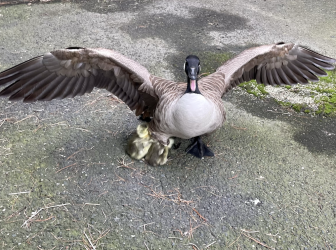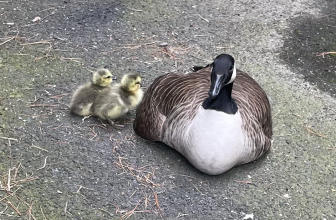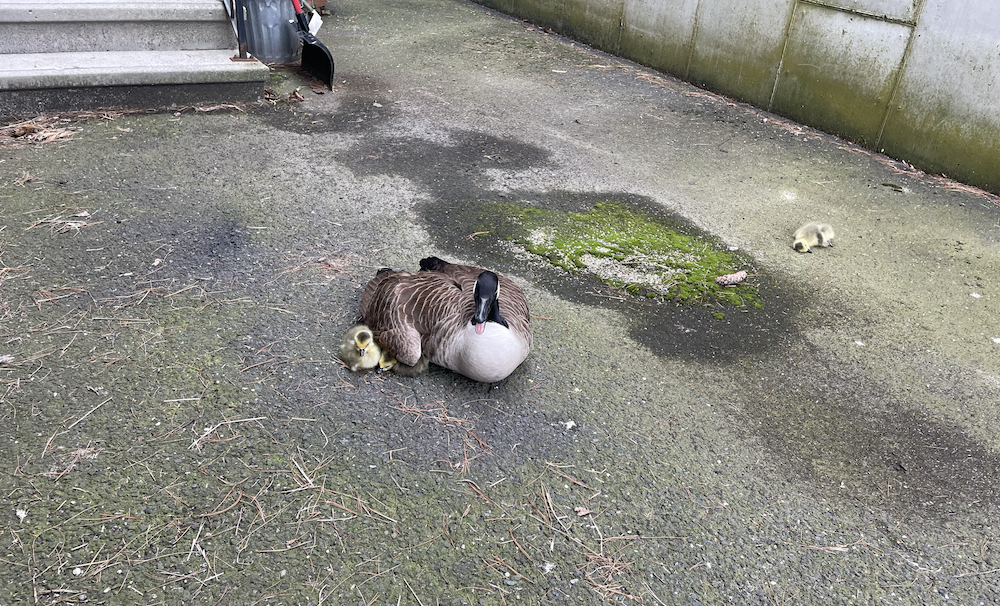A baby goose fell or leapt to its death at the Transfer Station last week, after hatching in an undetected nest on top of a former incinerator building there, officials say.
Animal Control Officer Allyson Halm and New Canaan firefighters responded to the Lakeview Avenue facility shortly after 12 p.m. Friday, when a deceased gosling appeared just outside the structure.

The father goose protecting two surviving goslings at the Transfer Station, May 5, 2023. Photo published with permission from its owner
Asked about the incident, Halm said the father goose could be seen nearby with two goslings that survived the jump down under his wing.
Town officials had not been aware that Canada geese were nesting atop the building, Halm said.
“I was suspicious that they were up there, but it was so high, I didn’t think it was possible,” she said.
Officials have known about three pairs of geese that tend to nest at the Transfer Station, and Halm works together with Chris Santopietro from Geese Relief LLC—a contractor hired to haze geese and addle eggs at public properties—to identify and address their nests, she said.
“Two of the three [pairs] have outsmarted us and now, last year, one of the three went up on the roof of a shed near the pumps at the Transfer Station,” Halm said. “Unfortunately, we were told the roof is unsafe and we could not go up there to addle the eggs.”

The father goose with two surviving goslings at the Transfer Station, May 5, 2023. Photo published with permission from its owner
Santopietro in addling the unhatched Canada goose eggs uses a “poultry stick” to pierce the shell so that the egg cannot develop. The method is designed to result in the female who laid the eggs learning that reproduction cannot succeed in the area, forcing her to find a new location the following breeding season.
Last year, the goose couple on the shed roof—which is much lower in height than the incinerator building—had a successful breeding season, Halm said.
“The year I could not find [the third couple],” she said.
“One day I did see a head up there and thought, ‘There’s no way,’ ” Halm said. “But that’s what they did. Apparently the first one jumped.”
There would’ve been little that officials could do in any case once the eggs hatched, Halm said.
“By us going up there it would have forced them to jump and the parents would get aggressive, putting everyone at risk,” she said. “We let nature take its course.”
The surviving family of geese is gone from the Transfer Station area now, Halm said, so presumably the surviving goslings are doing OK.
Halm, who is on track to retire this summer, said she will circle up with Santopietro and her successor in the Animal Control officer role will address how to preempt the danger of geese nesting atop the incinerator building next spring.

